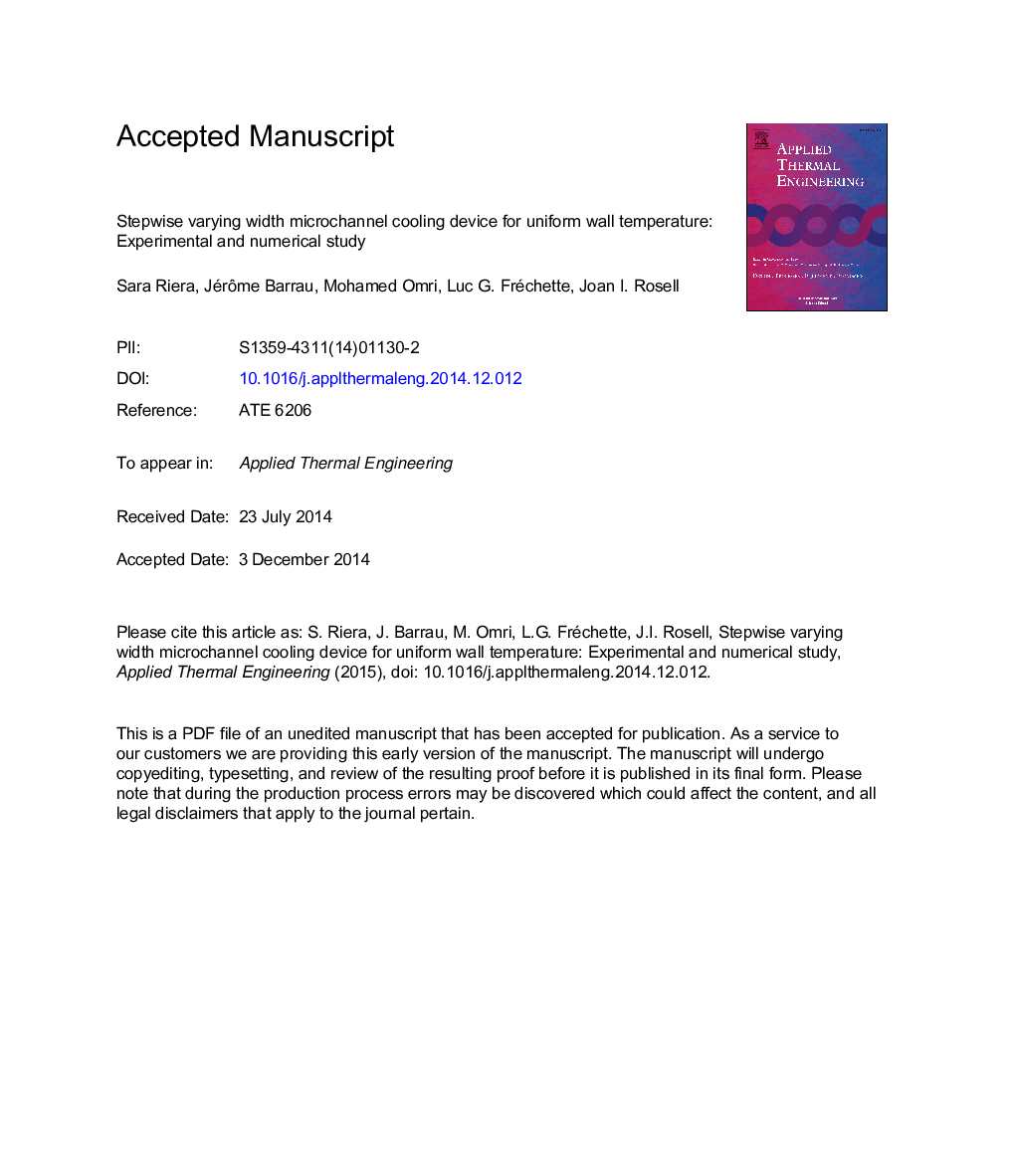| Article ID | Journal | Published Year | Pages | File Type |
|---|---|---|---|---|
| 7048909 | Applied Thermal Engineering | 2015 | 28 Pages |
Abstract
Within the high heat extraction cooling technologies, stepwise varying width microchannel cooling schemes have demonstrated their capacity to provide high temperature uniformities with low pressure drops. In this study, a method to tailor the design of this kind of cooling device to the needs on an application is developed. The resulting geometry is experimentally tested. A global thermal resistance coefficient of 2.35·10â5 m2 K/W has been found, improving near three-fold the performance in a millimetrical scale for the same flow rate. The temperature profile of the wall temperature is quite uniform, validating the design of the cooling device. A numerical model is developed and validated through comparison with experimental results. It shows the smoothing effect of the Thermal Interface Material (TIM) on the temperature profile and the improvement of both the thermal resistance coefficient and the temperature uniformity with the increase of the flow velocity.
Related Topics
Physical Sciences and Engineering
Chemical Engineering
Fluid Flow and Transfer Processes
Authors
Sara Riera, Jérôme Barrau, Mohamed Omri, Luc G. Fréchette, Joan I. Rosell,
